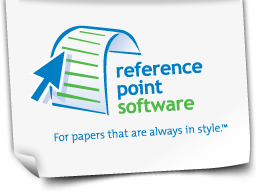The Primary Structure for an Exploratory Essay
The exploratory essay is, arguably, the most unusual of all essay types and probably the most interesting and easiest to write. The focus of this essay is a question, not a thesis, and may address both content-oriented questions as well as rhetorical questions. It is meant to educate yourself as well as the reader in an unbiased manner and to come to a conclusion, rather than to prove something. Ideally, it should be started without any idea of what answer you will come to in the end.
The exploratory essay is the opposite of an argumentative essay or a persuasive essay, both of which seek to persuade the reader to accept a particular point of view or a research essay that tries to prove some idea by manipulation of data. Also, the exploratory essay differs from the expository essay, which is an essay that merely expresses the point of view of another person and the critical essay that evaluates some other piece of work before finally deciding whether or not the author disagrees with it.
Structure
The typical structure for any essay, including the exploratory essay, generally consists of five paragraphs: one for introduction, three paragraphs for the body, and one for the conclusion.
Introduction
This is where you define your topic. In the first line or at least very early in the opening paragraph, you present a question or an unknown fact that you answer or explain as you go through the process of your essay. You may use a quotation from some other source to present your topic or ask a question based on your description of an event. The introduction is your opportunity to explain the point, problem, or topic of your essay, and do so by going over the generally known points of view on the topic or problem.
Body
The body paragraphs discuss the inquiry process and why you selected it. In other words, this is where you offer additional information for the purpose of background that presents differing points of view. Here, you compare the points of view provided in the additional information and analyze them as to how they would offer a solution to the problem. Choose what you consider to be the best solution or offer your own.
Conclusion
The conclusion should return to your introduction, restating the problem you explored, outlining some of its possible causes, and question whether or not you have answered the problem. It might be that you still have unanswered questions relating to the problem, and that is fine. Discuss why and where you might look to answer these further questions and what other research you may have to do. If you have reached a decision, share your thoughts about your decision process.
Formatting Styles
It is essential that you consider the various formatting styles before you start your essay. There are a few major styles used in academia, and each one has its own particular rules. The primary styles are the MLA, APA, Chicago, and Turabian formats. Which formatting style you use will affect how you reference the works of other authors in your paper. Citing these references accurately will allow your readers to access the third-party data you present in your paper quickly.
For more information about APA or MLA formats, contact us today.
David Plaut is the founder of Reference Point Software (RPS). RPS offers a complete suite of easy-to-use formatting template products featuring MLA and APA style templates, freeing up time to focus on substance while ensuring formatting accuracy.
Reference Point Software is not associated with, endorsed by, or affiliated with the American Psychological Association (APA) or with the Modern Language Association (MLA).
